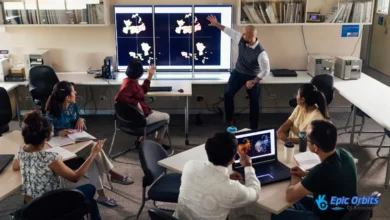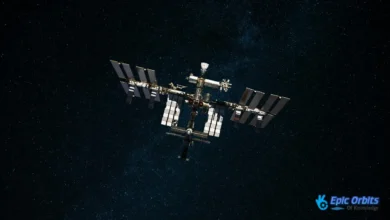How New Space Missions Are Expanding Human Knowledge
Explore the latest advancements in space missions and how they're expanding our understanding of the universe.
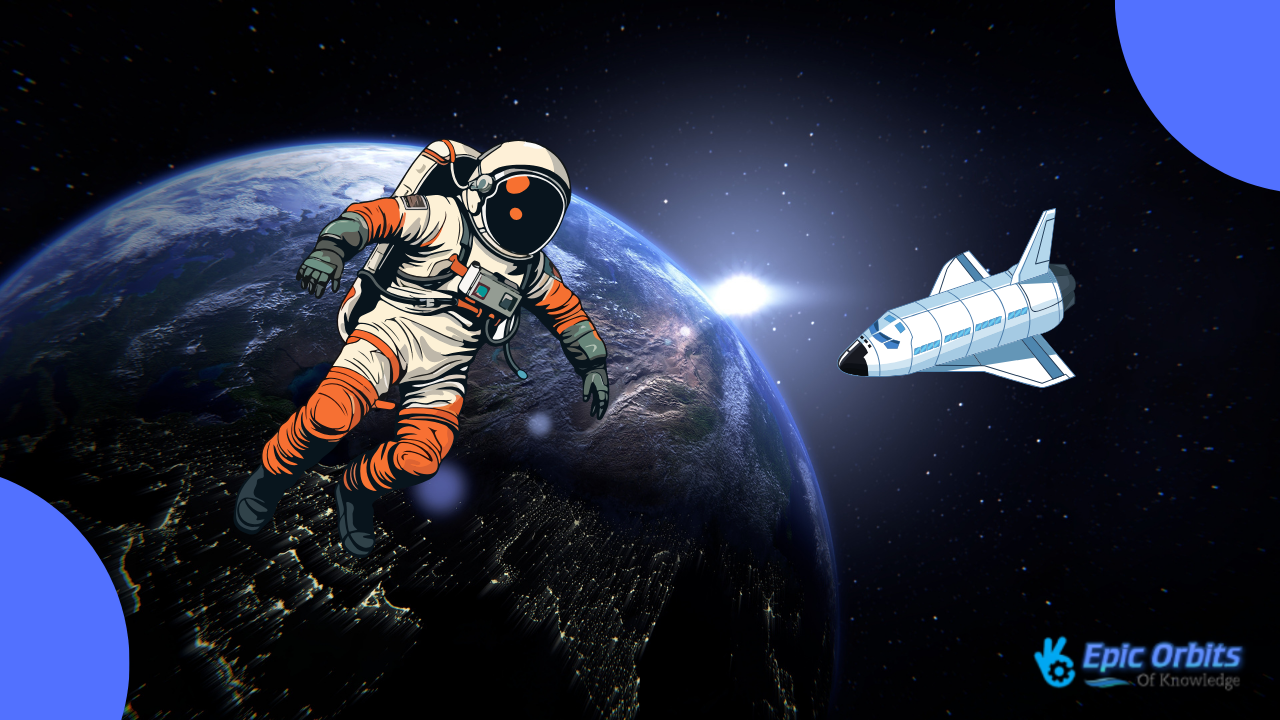
The number of space missions has skyrocketed over the last two decades as different organizations all across the globe set ambitious initiatives, reshaping our knowledge of the cosmos.
From the makeup of close planets to the nature of far-off galaxies, this new age of exploration is marked by worldwide cooperation and innovative technologies allowing scientists to address basic questions about the universe.
Consequently, the information gathered in these projects is transforming several scientific disciplines, including astrobiology, planetary science, and astronomy, thereby advancing human understanding.
What are space missions?
Renowned for their complexity, space missions call for rigorous testing to guarantee success, modern technology, and laborious planning. They often need both international cooperation and significant financial outlays. The knowledge and data gathered on these expeditions also have wide consequences, including the development of scientific understanding and the inspiration of the next generations of engineers, scientists, and adventurers.
Space exploration has lately seen a rebirth of interest and activity as government and commercial enterprises actively seek missions to the Moon, Mars, and beyond.
Projects that involve space missions are challenging due to their focus on exploration, research, and the application of space technology.
These missions represent mankind’s relentless quest for knowledge outside of Earth, scientific progress, and technical innovation. Whether they were conducted by government space agencies, for-profit companies, or international alliances, space missions—regardless of their nature—have been crucial in advancing knowledge of the cosmos and stretching human capability.
There are numerous generally distinct categories for space missions, each having goals:
- These missions seek to learn about celestial bodies, including planets, moons, asteroids, and comets. Sending spacecraft to these far-off sites allows one to collect data, take pictures, and examine the geology and makeup of these things. Along with the Voyager probes that have passed beyond our solar system, iconic exploration missions include the Mars rovers Curiosity and Perseverance.
- The Hubble Space Telescope and other space-based telescopes and observatories help us see far-off galaxies, stars, and other celestial objects clearly. These missions provide us essential new perspectives on the cosmos so that we can discover its beginnings and development.
- Instruments on Earth-Observing Missions enable satellites orbiting our globe to track environmental changes, temperature, weather patterns, and natural calamities. Resource monitoring, disaster management, and climate study depend on these missions.
- Manned missions, or human spaceflight missions, take people into space to perform scientific study, technological testing, and experimentation. Such missions find their base on the International Space Station (ISS), therefore promoting worldwide space exploration cooperation.
- Private businesses such as SpaceX and Blue Origin have joined the space sector with goals ranging from satellite deployment to space tourism. These missions aim to provide fresh space-based business enterprise possibilities.
Aiming to go beyond our solar system to investigate other star systems and maybe hunt for evidence of alien life, interplanetary and interstellar missions These missions reflect mankind’s long-term hopes for interplanetary travel, even if they are mostly hypothetical for now.
Space Missions: The New Space Exploration Era
Driven by innovative technology and worldwide collaboration, space exploration is now in a new age. Important developments in many disciplines define this metamorphosis.
Modern spacecraft are equipped with highly efficient solar arrays, autonomous navigation systems, and artificial intelligence, enabling longer and more complex missions than ever before. Innovations such as CubeSats, advanced propulsion systems, and sophisticated remote sensing sensors are driving current advancements in space exploration.
Artificial intelligence allows spacecraft to make autonomous decisions, improving mission efficiency and reducing the need for constant ground control. CubeSats, which are miniaturized satellites used for research, lower costs and increase accessibility, making space missions feasible for a broader range of organizations. Advanced propulsion systems enhance travel speed and maneuverability, expanding the capabilities and reach of modern missions. These technological developments collectively enable more ambitious exploration and scientific discovery in space.
The democratization of space access has produced a varied ecosystem of parties ranging from multinational consortia to private businesses to conventional government agencies. With institutions like NASA, ESA, JAXA, and ISRO pooling resources and expertise, global cooperation has become essential for addressing audacious missions.
Revolutionary Space Missions Transforming Our Understanding

Pioneer space missions are redefining the cosmos. These innovative projects are stretching human knowledge and broadening our cosmic awareness.
1. James Webb Space Telescope
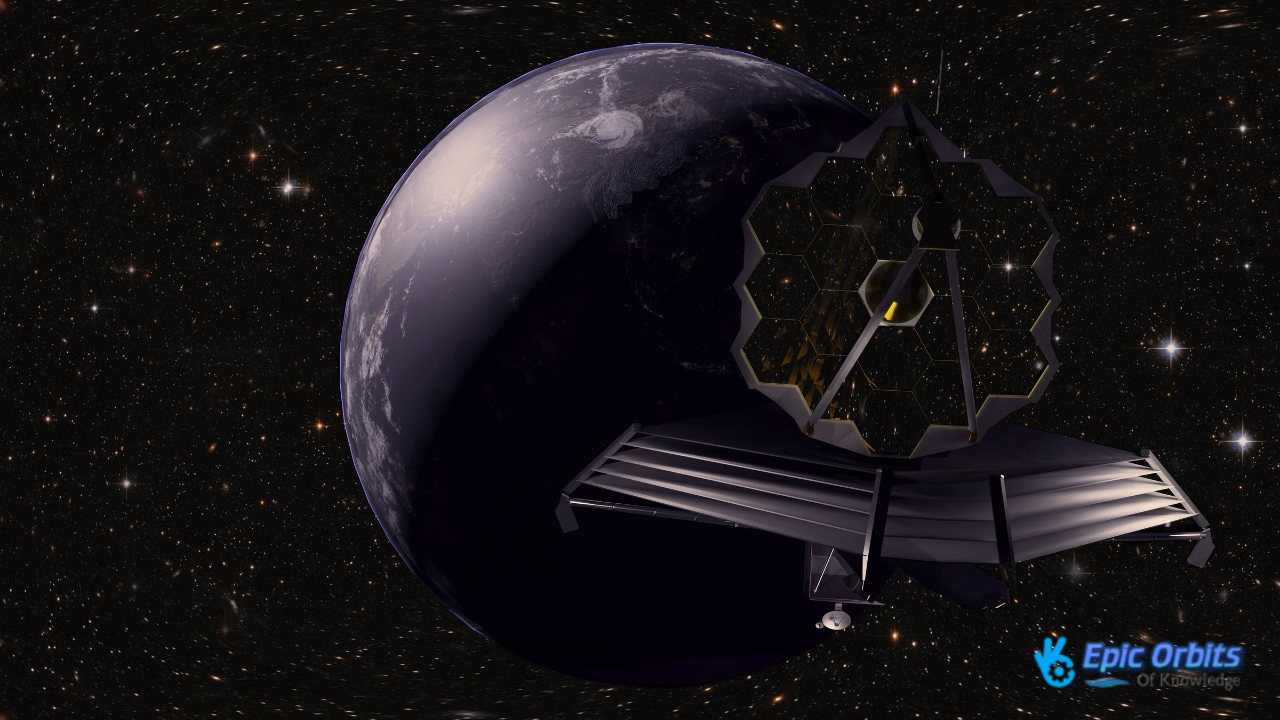
Launched by an Ariane 5 rocket from Kourou, French Guiana, on December 25, 2021, James Webb Space Telescope (JWST), U.S.-European Space Agency-Canadian satellite observatory intended as the replacement for the Hubble Space Telescope (HST), About 1.5 million kilometers (930,000 miles) from Earth on the nightside, the JWST circles the Sun in a Lissajous pattern using a mirror 6.5 meters (21.3 ft), seven times bigger than that of the HST. It bears the name James Webb, the NASA administrator in charge of the Apollo project (1961–68).
To see objects like the early galaxies and protostars radiating at those wavelengths, the telescope mostly picks up light in the infrared. A sun shield around 150 square meters (1,600 square feet) shields the telescope, as infrared satellite observatories have to be kept free from thermal radiation. The solar screen and the mirror were launched folded and have unfurled in orbit, as there is no rocket large enough to accommodate the JWST in its deployed condition.
James Webb Telescope vs. Hubble Space Telescope. See the contrast in resolution by swiping left and right:
2. Parker Solar Probe
Launched from Cape Canaveral five years ago, on Aug. 12, 2018, the Parker Solar Probe shot toward the sun to approach our star more closely than we have ever seen.
The plucky little spacecraft has been changing our knowledge of stars, our own sun, and how stars influence the solar systems surrounding them ever since.
The Parker Probe is named after the late University of Chicago physicist Prof. Eugene Parker, who first proposed the idea of the solar wind before embarking on a decades-long career dissecting the secrets of stellar physics. At 91, Parker visited Florida to see his namesake spacecraft launch; this is the first spacecraft named after a living person.
Built by Johns Hopkins Applied Physics Laboratory to resist the strong heat and radiation emanating from the sun, the spacecraft must continually position itself to maintain its shield between itself and the star. (save for one very cool piece of equipment created by UChicago graduate Justin Kasper, which peeks beyond the edge of the vehicle to gather solar wind particles).
For the fastest human-made item, it has often beaten its own records. As it approaches to within 3.9 million miles (6.2 million kilometers), it will achieve a peak speed of around 430,000 miles per hour (700,000 kilometers in 2024). That is quick enough to go from New York to Tokyo in less than one minute. (Here you may see the Parker Solar Probe in real time.)
The Parker Probe entered sunlike atmospheric conditions in December 2021. It has been circling the sun ever since, getting closer every time and returning lots of information on everything it comes across.
Said Nour Raouafi, the Parker Solar Probe project scientist at Johns Hopkins Applied Physics Laboratory in Laurel, Maryland, “Every close encounter opens new opportunities to understand better how the Sun works and how it affects us here on Earth and beyond.”
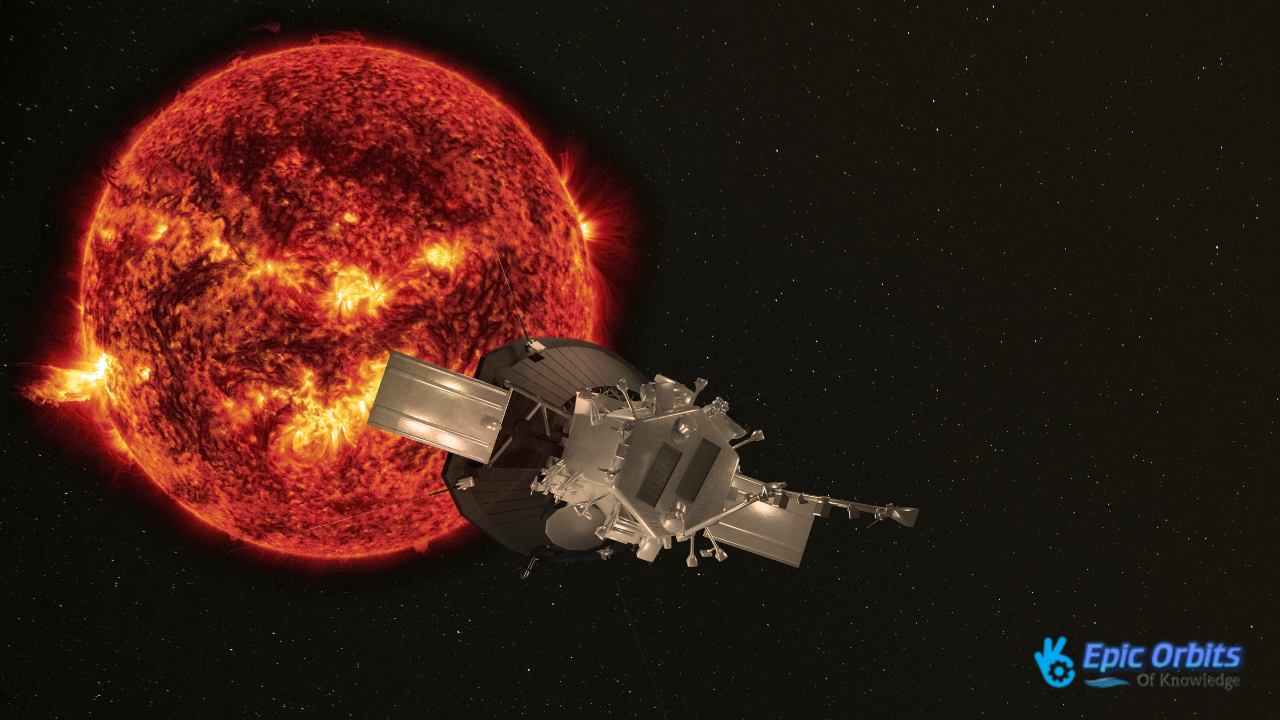
These are some of its results so far discovered:
✅ Litter the surface of the sun with magnetic funnels
Strange twists, also known as switchbacks, in the magnetic field as the spacecraft neared the sun were among the initial probe discoveries. NASA reports that these flips matched magnetic “funnels” on the solar surface during Parker Solar Probe’s sixth visit to the sun. These funnels arise from between formations known as supergranules, gigantic bubbles on the sun in which heated plasma from the solar core rises up, distributes out across the surface, cools, and then falls back down.
✅ The corona of the sun is wriggly
The surface of the corona has dips and spikes that wrinkle it rather than a smooth spherical form. These proved to be coronal streamers, enormous plumes of solar material ascending the atmosphere of the sun. NASA claimed the findings are changing our understanding of the sun’s atmosphere and how it generates the solar wind.
✅ Far more energetic particles than we could have imagined travel off the sun
At amazing speeds, particles fly off the surface of the sun. Although we very seldom see them on Earth, Parker Probe’s detectors have detected enormous quantities of these particles. Not only are they much more plentiful than we would have thought, but they also arrive in many different forms and often follow rather indirect paths as the flipping magnetic fields trap them.
These funnels may be the key to explaining why the corona of the sun is so much hotter than the surface—a riddle that has tormented science for more than half a century.
✅ Venus has a quite lengthy plasma tail
For its journeys around the sun, the Parker Probe utilizes Venus to round the corner; hence, it also gathers revolutionary data about Venus. Made measurements of the radio waves in the Venus atmosphere, saw the dust ring around Venus, and assisted in the geology and mineralogy of Venus understanding. It has also investigated the comet-like tail of plasma trailing off Venus and discovered it to be very large—equivalent to the planet’s radius.
Parker Probe also captured the first-ever pictures of Venus’s surface at visible wavelengths, essentially simulating what humans might be able to view should they visit the planet.
✅ From whence and what drives comets?
Parker Probe’s location in orbit gave it an opportunity to get close-ups of a comet traveling by and clarify the source of the Gemini meteor shower, thus illuminating the heavens above Earth every winter.
Parker Probe completed its sixteenth solar orbit in June 2023 and is now circling Venus, getting ready for yet another interaction. For scientists, this represents an intriguing aspect of their work. The sun was in a less active phase of its cycle over the first few years of the mission. But it’s predicted to stir in the next years, allowing Parker Probe front-row access to a remarkable display of solar flares, sunspots, and solar explosions.
Before Eugene Parker died in 2022 at the age of 94, he consistently reviewed the data that arrived from the spacecraft. Often visiting Parker at his Hyde Park home to provide updates on the most recent discoveries, NASA mission scientist Nicky Fox
“You rarely have a space mission that doesn’t come up with the unexpected; it’s actually going to get more exciting as the mission goes on and crosses into areas spacecraft have never been in before,” Parker remarked in 2019. “Every step of the road is absolutely amazing.”
Space Missions: Mars Exploration
Mars research using modern technologies is revealing mysteries about the past and possible habitability of the planet.
1. Perseverance Rover and Ingenuity Helicopter
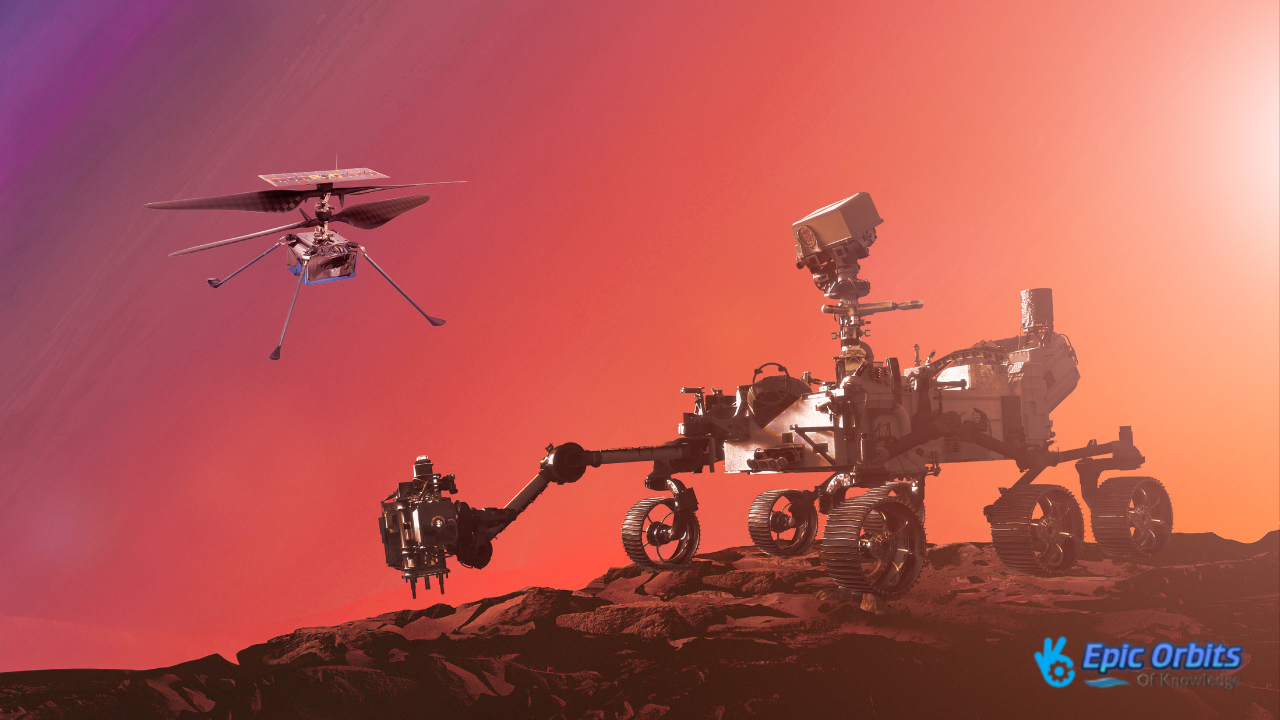
Originally hidden inside the belly of NASA’s Perseverance rover on July 30, 2020, Ingenuity soared. From March 26 to April 3, 2021, the rover deployed it across many days.
April 19, 2021, saw the first powered flight from Ingenuity. Rising three meters (10 feet), the aircraft hovered for thirty seconds and then landed once again. NASA said the helicopter had effectively fulfilled its goal of proving controlled flight after a few further test flights.
Beginning its sixth flight on May 22, 2021, the mission entered its operational demonstration phase. For this phase, Ingenuity showed how aerial reconnaissance may be accomplished using interplanetary helicopters. To picture geologic characteristics for the mission research team that would be worthy of study, the chopper bounced about Jezero Crater, an ancient river delta perhaps containing a record of former life. Ingenuity also demonstrated how it may help rover drivers create their routes.
✅ When did the expanded mission of Ingenuity start?
NASA extended mission activities in March 2022 with the chopper still in excellent condition. By the time its mission ends on January 4, Ingenuity will have helped the Perseverance team with route planning and reconnaissance.
When days in the northern hemisphere of the red planet were longer and temperatures were greater, Endurance and Ingenuity landed during the Martian spring. Long evenings and frigid temperatures defined the Martian winter. While Ingenuity is solar powered and requires a daily heavy dose of sunshine to charge its batteries and run the heaters keeping its electronics warm, Perseverance is nuclear powered. Along with increasing atmospheric dust, the shorter days meant the aircraft lacked sufficient battery life.
Still, it endured the severe winter and carried on flying until Jan. 18, 2024, when it damaged one of its rotor blades during its 72nd and last flight.
✅ Ingenuity’s architecture
Four carbon composite legs allow Ingenuity to stand on Martian ground. It weighs less than 2 kg (4 pounds) and is barely 0.5 meters (1.6 feet) tall. Rising to fly you By using two carbon fiber blades placed above one another, the helicopter generates lift. Each of the 1-meter (4-foot) blades turns in opposing directions. 2-meter (4-foot) blades turn in opposing directions. Their high spin speeds help to reduce vibration, as they are thicker near the rotor than blades grounded on Earth.
At the Martian surface, the atmospheric pressure is only one percent that of Earth. To raise Ingenuity off the surface, the blades must spin very quickly. The blades of Ingenuity whirled at around 2,400 rpm (revolutions per minute) during the beginning of her mission in a Martian spring. Falling air density meant they had to spin much faster in the Martian winter.
A rectangular solar panel above its two blades charges its lithium-ion batteries with ingenuity. One battery charge lets it soar up to ninety seconds every day. Benevolently hanging behind the chopper is a box housing the electronics of the helicopter: batteries, sensors, a color camera, and a black-and-white navigation camera.
✅ How creatively flown on Mars?
Signal travel between Earth and Mars takes five to twenty minutes, depending on the locations of the planets. Ingenuity pilots at NASA JPL, hence, cannot just operate it with a joystick.
Ingenuity also lacks a powerful enough antenna to directly reach Earth. Its contacts with Earth must all pass via a base station built on Perseverance (whose communications are then sent via a Mars orbiter). Pilots schedule every flight and provide instructions to Perseverance, which forwards them to Ingenuity.
Then Ingenuity must finish the trip on its own, of its own free will. Using data from its cameras, a laser range finder, and an inertial measurement unit, the helicopter tracks where it is and where it is headed as it flies.
Using Perseverance, images and information from every mission are returned to Earth The remarkable pictures Ingenuity catches provide useful technical knowledge. They also thrill the public about space exploration. Every flight is recorded in a unique handwritten pilot’s logbook fashioned like the ones pilots carry on Earth.
✅ From whose inspiration is Ingenuity named?
High school student Vaneeza Rupani from Northport, Alabama, named the aircraft via a NASA competition.
“We all experience the wonders of space exploration thanks in great part to the creativity and brilliance of people working hard to overcome the challenges of interplanetary travel,” she said.
NASA chose the landing location of the Perseverance rover in honor of science fiction writer Octavia E. Butler. In honor of the two brothers who pioneered the first aircraft flight in 1903, it was also dubbed Wright Brothers Field, the site of Ingenuity’s maiden takeoff. Additionally included in Ingenuity is a little piece of cloth from the original Wright Brothers Flyer 1.
✅ What was the cost of Ingenuity?
Building Ingenuity cost 80 million dollars; an additional $5 million was set aside for operations during its intended one-month mission. That is a small portion of the $2.7 billion Perseverance mission cost throughout its first two years of operations.
Creativity shows the worth of including low-cost technological demonstration projects in more ambitious initiatives. Although Perseverance’s scientific goals exclude the helicopter, by supporting the rover’s mission crew, it has exceeded expectations and is still proving its worth.
2. Mars Sample Return Mission
Bringing a little of another planet in our solar system back home today marks one of the most fascinating events in the annals of space travel. With NASA’s Mars Sample Return (MSR) mission, mankind should be propelled ahead in a fresh chapter of the space race, and major gaps in our knowledge of the cosmos should be filled.
Investigating the universe is about enhancing life on Earth, motivating a new generation while growing business, and giving scientists and engineers high-paying employment, not just about generating new discoveries.
Dedicated to space exploration, the United States has a legendary history of mankind-leading successes. But if we are to keep this enthusiasm and keep experimenting, we have to achieve MSR faster and more inexpensively than the suggested architecture now allows.
Rocket Lab carries in its DNA planetary science. It is what motivates us to tackle challenging challenges, to develop fresh and creative skills, and to push our own limits to aim for the apparently unattainable.
At Rocket Lab, we know two things about our solar system: we have visited the moon; we are developing the first private mission to Venus; most interplanetary missions not using radioisotope thermoelectric generators are powered by our solar cells; and last year we delivered not one but two spacecraft to NASA headed for the Red Planet. From launch vehicles to planetary missions, we are expanding space exploration in line with our basic conviction that access to space will enhance life on Earth.
Rocket Lab has shown such a strong interest in the MSR project due in great part to our commitment to planetary research. The top planetary priority for the scientific community is MSR. It marks a significant turning point for planetary science, a major step toward understanding the beginnings of our planet, and propels us toward sending people to Mars.
Since the 1970s, gathering samples from Mars has been an ambition; yet, given increasing costs and protracted delays, the mission has seemed just out of grasp. Still, the human will to discover will not allow us to fail.
✅ Mission design and budget
Realizing the current mission design was too far over budget (up to $11 billion) and behind schedule (samples returning in 2040), NASA this summer launched an independent assessment paired with a series of industry studies looking at alternate designs.
NASA revealed the findings of six months of investigation in December; it wants another year and $300 million to keep looking into the issue. Moreover, NASA suggested two general choices for investigation: Option A, a NASA-led architecture employing historical technology almost comparable to the original plan former Administrator Nelson abandoned; and Option B, including private partners with more costly heavy vehicles and significant lead times.
Most crucially, based on first projections, these proposals may still deliver samples as late as 2039 and still cost as much as $7.7 billion.
Bold leadership is necessary if the country is to recover its mission. NASA should immediately finance the commercial MSR ideas in hand, enabling it to implement MSR ahead of time and well below legacy cost forecasts. This is the road forward. Perfect for this is Rocket Lab. This is why our suggested mission design under a solid fixed-price contract will return samples as early as 2031 at a cost of less than $4 billion.
Using a three-launch solution including a Mars Telecommunications Orbiter, a Sample Return Lander, and an Earth Return Orbiter (ERO), Rocket Lab’s design will return all thirty Martian samples being gathered by NASA’s Mars Perseverance rover.
Rocket Lab’s will operate under a firm-fixed price contract, unlike those of the baseline plans, to guarantee on-time performance and cost management. The fact that Rocket Lab’s approach allows us to execute as a single, vertically integrated prime contractor supplying all mission parts, therefore removing complex mission management, also makes it unique.
Using our technological knowledge, the architecture streamlines processes with many creative ideas.
We suggest:
- Avoids complicated crewed procedures to return the samples and uses commercial launch alternatives without the requirement for sophisticated in-space refueling.
- Uses our flight-proven Electron Rutherford engines to use storable chemical propulsion for the Mars Ascent Vehicle (MAV) and ERO.
- The propulsion system of the lander uses legacy engine designs.
- Adds supersonic parachutes and proven Mars entry aeroshells.
- supports exact landings using terminal guiding systems and landing algorithms developed from lunar lander operations.
- Guarantees effective movement from the Perseverance rover to the MAV, hence simplifying robotics for the sample transfer arm.
- Uses a single stage to orbit MAV, therefore removing the need for sophisticated ejection mechanisms and multi-stage solid propellants.
- Uses in-house solar power systems to substitute for nuclear power.
- Integrates Mars technology under NASA’s direction with an eye on heat protection; entry, descent, and landing systems; and contamination management.
- Leveraging our affiliation with Johns Hopkins Applied Physics Laboratory and the Rocket Lab-manufactured Frontier radios, we use legacy deep space communication and navigation capabilities.
- Makes robotics for the sample collection, containment, and return system simpler using algorithms, heritage rendezvous, proximity operations, and docking sensors.
- Implements an Earth return direct entry, parachute-less impactor system.
✅ Creativity in the private sector
America did not turn to a NASA-led development effort to bring people back into space after the Space Shuttle was decommissioned. Rather, NASA made use of America’s most valuable resource—private sector creative ability. NASA should adopt this success model and use the commercial sector inside the scientific portfolio to optimize the value of every dollar paid for by every citizen.
And even if Mars Sample Return marks a turning point for mankind in its own right, it is simply a starting point. Essential building elements for the next major step—sending people to Mars—are the technologies we are creating for this one. We have to be unrelenting in our quest of this crucial goal, so it is time to use a rather different strategy.
founder, President, and Chief Executive Officer of Rocket Lab, a Nasdaq-listed premier launch and space systems firm providing access to space to enhance life on Earth, is Sir Peter Beck Capabilities of Rocket Lab include the space economy, including satellite design and manufacturing, industry-leading spacecraft software and components, and consistent launch services.
Thanks to technical advances, the field of space research is changing significantly. These developments not only increase the capacity of space missions but also lower their expenses, hence democratizing access to space and supporting new kinds of scientific research.
On this website, we will discuss several articles about Space Exploration and together we will discover our science that hides many secrets.
SmallSats’ and CubeSats’ Transformational Power
Standardizing tiny satellite designs has let the CubeSat revolution change space science. With this standardization, small businesses, colleges, and even high schools may create and launch working spacecraft for a fraction of the conventional prices. Often little more than a shoebox, these small satellites may now carry advanced scientific missions, from Earth observation to astrophysics, that would have needed far bigger spacecraft in past decades.
Advanced Systems of Propulsion
Advanced propulsion technologies are increasing spacecraft’s reach and capability: ion thrusters, solar sails, and nuclear thermal propulsion ideas. Faster travel times and more effective maneuvers made possible by these technologies open the path for ever more audacious space missions.
Designed as a follow-on to Syncom, the successful experimental communications satellite, the Applications Technology Satellite (ATS) series showed how missions for technological research might result in useful applications. With today’s technology demonstration missions, this paradigm carries on and creates a virtuous cycle wherein lower costs lead to more missions, which in turn propel more technical developments and scientific discoveries.
The Effect of Space Missions on Human Knowledge Going Forward
Looking forward, the cumulative effect of current and future space missions will probably profoundly change human understanding. The revelations from missions like the James Webb Space Telescope, Europa Clipper, and Mars Sample Return will cause paradigm changes in our knowledge of planetary formation and the factors rendering planets livable.
Combining data from many missions will help us to expose hitherto undetectable trends and processes. While the study of tiny entities in our solar system will provide light on their early past, Earth observation missions will help us to better grasp climate change.
With uses beyond space exploration, these missions will stimulate technological innovation. In the end, they will broaden humanity’s perspective by incorporating our planet and species into the larger context of cosmic development.


